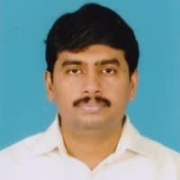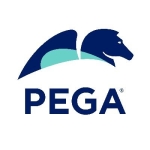I use UiPath to automate tasks in our internal HR and finance departments, as well as to dispatch back office requests, close accounts, process insurance claims, and make international money transfers.
Building automation with UiPath is easy. It depends on our level of understanding of the process we want to automate. UiPath offers a wide range of possibilities for automating business processes. For example, we can use UiPath to get input data from files, extract data from databases, or make SQL requests. We can also use UiPath to manipulate applications, perform human actions on the user interface, and introduce back-office processes. Finally, we can use UiPath to distribute the execution of our automation across multiple devices.
UiPath enables us to implement end-to-end automation and orchestrate all processes using the orchestration tool. We can get the inputs for the process and execute the report at the end. We have all kinds of possibilities. For five or six years now, we have been able to automate all the processes that we faced, as long as the inputs are structured and well-structured, and we have a good flow and volume of inputs.
There are numerous advantages to using UiPath. Firstly, it can significantly increase productivity and reduce processing time. Secondly, UiPath enables scalability, allowing processes to be performed around the clock, seven days a week. Additionally, robots can execute processes with consistent quality, minimizing the risk of errors or incidents. Finally, UiPath can help optimize human resources by delegating tasks with low added value to robots, freeing up human resources to focus on tasks that require higher levels of expertise.
The time it takes to bring UiPath to market can range from a few days to several weeks. The return on investment can become apparent within a few weeks or months, depending on the complexity of the process involved.
When we refer to UiPath as a suite, it includes several tools and features that can greatly facilitate the automation process. For instance, we can group some commonly used features into a single library. Additionally, we can segregate the different layers of our development process. These abundant features can help us organize our work on UiPath, ultimately reducing our on-premises footprint.
UiPath Academy is a place where we can ramp up our skills very quickly and become operational as soon as possible.
UiPath's AI features provide a broad range of API applications, such as handling unstructured inputs. This includes non-digital inputs such as paper forms. Additionally, the system can process false inputs that are not well-organized through character recognition. UiPath also offers machine learning to further enhance its functionalities.
UiPath accelerates digital transformation and significantly lowers the associated costs. The impact is significant as it enables the deployment of production environments in just a few weeks. Additionally, RPA users can collaborate over the weekend to automate applications starting from the human interface. This allows us to automate more processes effectively. Other tools may require access to top-up bases or the use of Unix or scripts, but with RPA, we can automate a wide range of features based solely on the user interface component.
There were no expansive or complex application upgrades or IT application support required.
UiPath helped to decrease human error. By developing autonomous processes and thoroughly testing them, we ensure consistent and reliable execution, which guarantees high-quality results for our customers. Compared to human execution, global execution by robots is both more accurate and quicker.
UiPath saved us around 17 percent of our time.
UiPath helps to save costs in several ways, such as reducing the time required for execution. The main difference between manual and automatic processes is the ability to have UiPath execute tasks on our behalf, based on pre-defined reports. Unlike humans, who typically work from eight o'clock in the morning until six o'clock in the evening, UiPath can work all day, even on weekends. This can result in cost savings of up to 60 percent.
The queue feature is the most interesting to me because it allows us to work on a list of tasks in parallel on several robots. Additionally, the ability to integrate the OCR components is valuable. We use this feature for one of our banks in Africa. These are the most valuable features that we cannot find with other tools.
The pricing has room for improvement.
I would appreciate UiPath's assistance in simplifying our process of easily and quickly capturing our customers' business requirements within our framework.
I have been using UiPath for almost seven years.
UiPath's technical support is reactive.
The initial setup is complex, and obtaining a license for training poses a challenge. As a result, an experienced person is necessary to complete the deployment. Our deployment required two people.
The deployment can take one to two days for an experienced person, but for an inexperienced person, it may take up to three weeks.
The implementation was completed in-house.
The return on investment is based on the complexity of the process that is being automated.
The cost of UiPath is higher in Africa than in Europe and Asia due to differences in salary levels. As a result, the number of customers who are able to use UiPath is limited.
We pay for additional components to include features, in addition to the licensing fees.
We utilized Selenium Test Automation for tests and conducted an evaluation. However, it did not fully meet our business requirements, so we selected UiPath.
I give UiPath a seven out of ten.
Due to the quantity of customer input, the success of automating tasks is not solely dependent on the capabilities of UiPath tools. The quality of the paper scan, document quality, and resolution are also crucial factors that can positively or negatively impact the possibility of a wide range of automation. Therefore, the success of automation is highly reliant on the quality of the source inputs, in addition to UiPath's capabilities.
Our implementation strategy involves beginning with the proof of concept and then separating processes before moving on to scaling the API.
I would recommend UiPath for large enterprise companies, as the cost of the solution may be prohibitive for smaller organizations.
I recommend that anyone assessing UiPath should first create a clear automation roadmap. This will enable them to address questions related to optimization, implementation, and development.





















